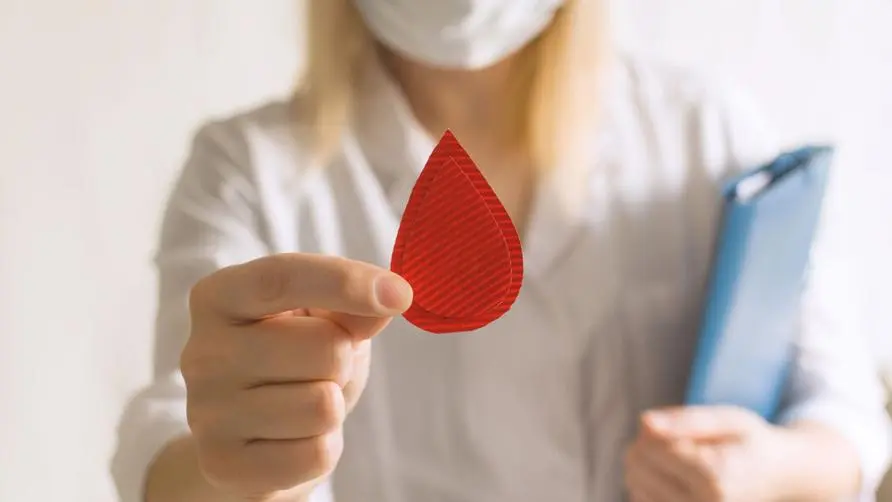Overturning decades-old treatment dilemma for Parkinson's disease! "Taiwan Edison" 1 invention helps patients get out of wheelchairs and regain their lives

Is it possible to develop Parkinson’s disease at the age of 40? Medical warning: Pay attention to more than 2 of 6 signs
According to guidelines published by the WHO, more than 8.5 million people worldwide are suffering from Parkinson’s disease, causing 5.8 million people to become disabled for the rest of their lives and nearly 330,000 people to die. The severity is getting worse year by year. Dr. Hu Chaorong of Shuang Ho Hospital of the Ministry of Health and Welfare said that Parkinson’s disease is a common neurodegenerative disease that usually occurs around the age of 60. In today’s “aging society”, the age of onset is not “old” at all. On the contrary, it is the age of connecting the past and the next.
Dr. Hu Chaorong explained that the typical clinical symptoms of Parkinson’s disease are mainly motor dysfunction. At the beginning, the hands and feet are prone to trembling, stiffness, slow movements, and unsteady gait, and the face is prone to expressionlessness (mask face) or involuntary flow. If two or more of these symptoms appear, you should be alert to the possibility of Parkinson’s disease. In addition, Parkinson’s disease may affect work performance and daily activities, easily lead to complications such as dementia, and even cause disability.
Dr. Wu Dingyu, an attending physician at the Department of Neurology at Shuang Ho Hospital, said that Parkinson’s disease is not a disease exclusive to the elderly. In recent years, early-onset Parkinson’s disease has become more common among young adults, causing a huge burden on families and society. Many people tend to mistakenly think that it is caused by the functional deterioration of the elderly, so they tend to ignore it in the early stage. They often wait until the symptoms seriously affect their daily life, and then go to the hospital for examination before making a diagnosis.
In addition, there are nearly 80,000 patients with Parkinson’s disease in Taiwan. It is a common neurodegenerative disease in Taiwan, with an incidence rate second only to Alzheimer’s disease. In terms of prevalence, there is one Parkinson’s disease patient for every 100 people over the age of 65. And it is not only the elderly who are affected by the disease, but also patients with early-onset Parkinson’s disease who develop the disease before the age of 40. Accounting for 2-10%.
Crossing the road seems to be “cursed” and freezes! Parkinson’s disease “fluctuations in drug efficacy” may cause the body to lose power
Dr. Wu Dingyu explained that Parkinson’s disease is caused by damage and death of nerve cells in the substantia nigra tissue of the brain, resulting in insufficient secretion of dopamine responsible for nerve conduction, which in turn causes movement disorders. Current treatments include supplementing dopamine drugs or physical rehabilitation. Mainly, it aims to maintain the patient’s daily living ability, but it can only alleviate the symptoms and cannot solve the source problem.
Parkinson’s disease has been unable to achieve breakthroughs in treatment for decades. Dr. Hong Qiandai, an attending physician at the Department of Neurology at Shuang Ho Hospital, pointed out that as the disease progresses and drug efficacy fluctuates, patients often need to increase the dosage of drugs, and side effects increase accordingly. And once the honeymoon period of the drug is over, the drug effect is prone to fluctuations. When the dopamine concentration is too high, the patient is prone to involuntary movements of the limbs and “dyskinesia”. When the dopamine concentration in the body is too low, the patient becomes conscious. The “power outage” state that is clear but unable to move the body not only causes trouble to patients, but also easily leads to personal danger.
Dr. Hu Chaorong shared that patients with Parkinson’s disease suddenly “frozen” when crossing the road due to fluctuations in drug efficacy, and almost had a car accident. In addition to fluctuations in drug efficacy and the inability to control the body independently, patients with Parkinson’s disease may also develop postural symptoms. Situations such as hypotension and sudden fainting can make patients’ daily life full of dangers. Therefore, whether it is due to Parkinson’s disease itself or complications, side effects and other conditions, patients in the later stages often use wheelchairs instead of walking and gradually become disabled.
Innovative therapy recognized by international journals! Hopes of reversing Parkinson’s disease treatment woes
The good news is that the decades-old treatment dilemma for Parkinson’s disease has recently seen a glimmer of hope! Honorary Professor Lin Hongyu of the National Taipei University of Technology decided to invest in research and development after suffering from Parkinson’s disease and successfully created a new treatment. Through “low-energy near-infrared light therapy” combined with hydrogen water supplementation, it activates damaged nerve cells directly from the source. Yuan. Clinical research has helped 17 patients bid farewell to mobility problems and regain a better life. The relevant results have also been published in the international medical journal “Medicine”. The epoch-making invention is expected to reverse Parkinson’s disease.
Honorary Professor Lin Hongyu, known as “Taiwan’s Edison”, has accumulated dozens of inventions and patents so far, and even won the Forbes Asia Charity Ranking. Unfortunately, he suffered from Parkinson’s disease in the same year, and from then on he began a life plagued by drug side effects and wheelchair-bound. Feeling the limitations of Parkinson’s disease treatment, Professor Lin Hongyu invested 7 years of research and finally succeeded in overcoming the problem of dopamine neuron dysfunction in Parkinson’s disease, activating damaged cells through low-energy near-infrared phototherapy (PBM). Supplementing hydrogen water avoids excessive cell damage and aging, and fundamentally solves the problem of dopamine neuron disorders.
In addition, a clinical study at Taiwan Ministry of Health and Welfare Shuang Ho Hospital also confirmed its effectiveness. Treatment for 15 minutes in the morning and evening for 2 consecutive weeks improved the movement disorders of 17 patients with Parkinson’s disease and prevented the patients’ cells from being destroyed. Aging and activating cell functions at the same time give patients the opportunity to get out of wheelchairs and regain their ability to move independently, and there is also a glimmer of hope in reversing Parkinson’s disease.
In memory of James, the British doctor who first discovered Parkinson’s disease in the world. Dr. James Parkinson, in 1996, the European Parkinson’s Disease Association designated Dr. Parkinson’s birthday, April 11, as “World Parkinson’s Disease Day”. Professor Lin Hongyu will also launch large-scale clinical research next, hoping to make this therapy a new treatment option for Parkinson’s disease as soon as possible, and change the fate of Parkinson’s disease patients around the world, so that Parkinson’s disease is no longer an “irreversible disease.” .
Further reading:





